Crossing borders - transcendental act
 10.1.2016 |
10.1.2016 |  tm leonard
tm leonard TEOL gave Lucky a $300 monthly housing allowance. SOL (shit out of luck) found a ground floor flat next to The Department of the Forest.
He helped Lucky get a used fridge and a gas cooker. Lucky paid $125 for the fridge and $25 for the propane. No propane no gain.
Being a short-timer in paradise he never bought cooking tools. After surviving Nam he’d answer the eternal quest-ion, how long have you been here? All day. I pass through.
Repeat - most popular word in global English classes. Say it again dear robot. All day.
SOL borrowed his grandmother’s pliable mattress from the Ottoman dynasty. He loaned Lucky a blank sheet of paper and blanket. No hot water. You can wash/spin clothes and shower in the upstairs bathroom where everything is shiny and modern, said SOL. Thanks, I wash clothes by hand. I need tactile textile texture. Zen.
You need to buy a water heater, said SOL. It will cost you years of tears and regret. I love showering with cold water. Keeps you alert and you dry faster. This went over SOL’s head and he was very tall. He slouched forever.
He manifested the Turkish I Am Defeated Posture.
* See illustration on page 101 in The Department of Fear & Conditioning Manual.
The TEOL director in Giresun, a graduate of a Stalin training camp for Authority Figurines waiting for his funeral said to Lucky, You pay for water and electricity. We will deduct $500 from your salary to pay for imported Russian coal to heat your flat in winter. Erroneous pays for heating.
Everything in Turkey breaks down in 4-5 years speaking of children, said Zeynep, a writer kid friend in Bursa, That’s nothing, said Rita cutting, selling ice and publishing her small life story in Banlung, Cambodia. Kids here are broken before they’re born. It’s a mutant besmirched genetic strain in our DNA. Paranoid adults murder their darlings with benign dependency and passive hopelessness the dreaded disease of the heart-mind.
Rita shared a story - up river from Banlung in a remote jungle village they carve images of their dead. The Chunchiet animist people bury their dead in the jungle. Life is a sacred jungle. They believe in the universal inherent power of the natural world.
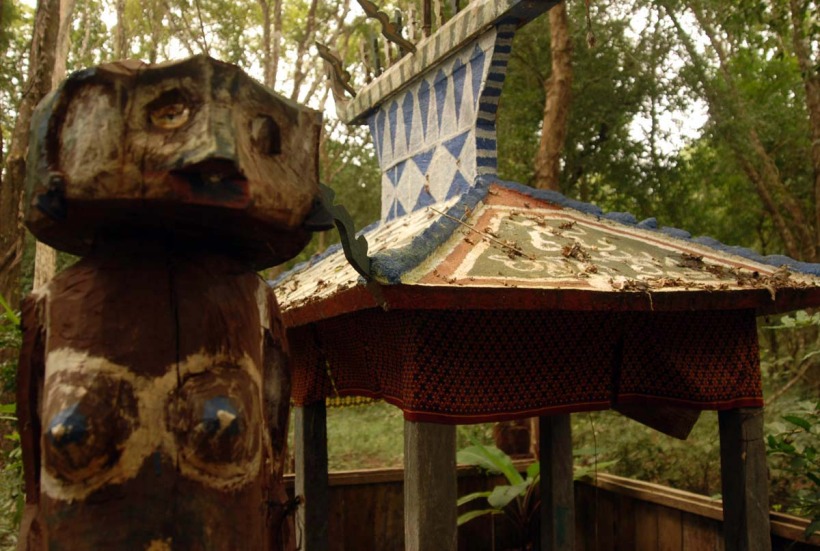
The Tompoun and Jarai tribes have sacred burial sites. The Kachon village cemetery is one hour by boat on the Tonle Srepok River from Voen Sai.
Heart of Darkness flows through the jungle.
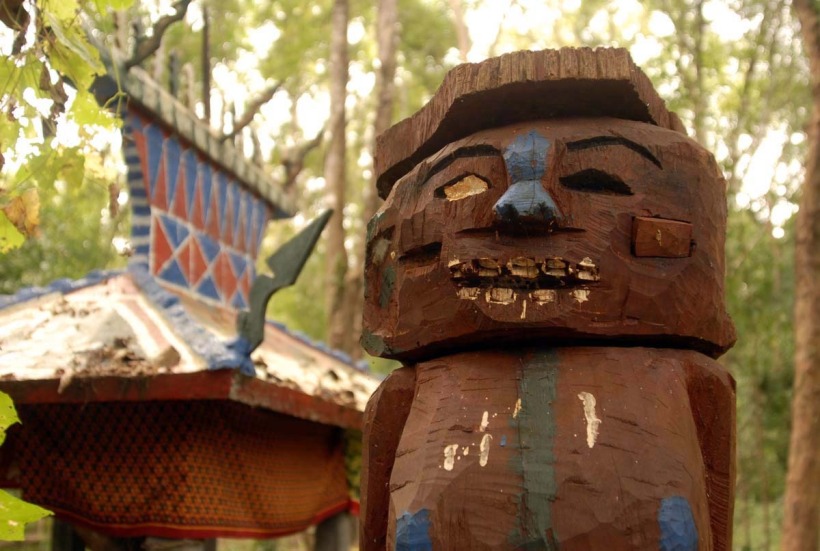
The departed stays in the family home for five days before burial. Once a month family members make ritual sacrifices at the site. The village shaman dreams the departed will go to hell. In their spirit dream story the shaman meets Loth, Leader of the Hell who asks for an animal sacrifice. The animist belief knows sacrificing a buffalo and making statues of the departed will satisfy Loth. It will renew the spirit and return it to the family.
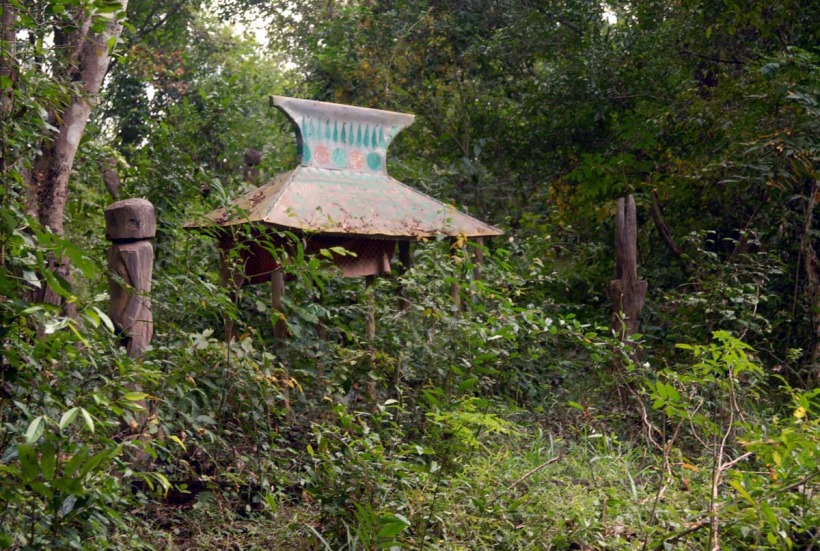
After a year family members remove old structures, add two carved effigies, whittle wooden elephant tusks, create new decorated roofs and sacrifice a buffalo at the grave during a festive celebration with food and rice wine for the entire village.
New tombs have cement bases and wooden effigies with cell phones and sunglasses. Never out of touch. See your local long distance carrier for plans and coverage in your area. The future looks brighter than a day in a sacred jungle.
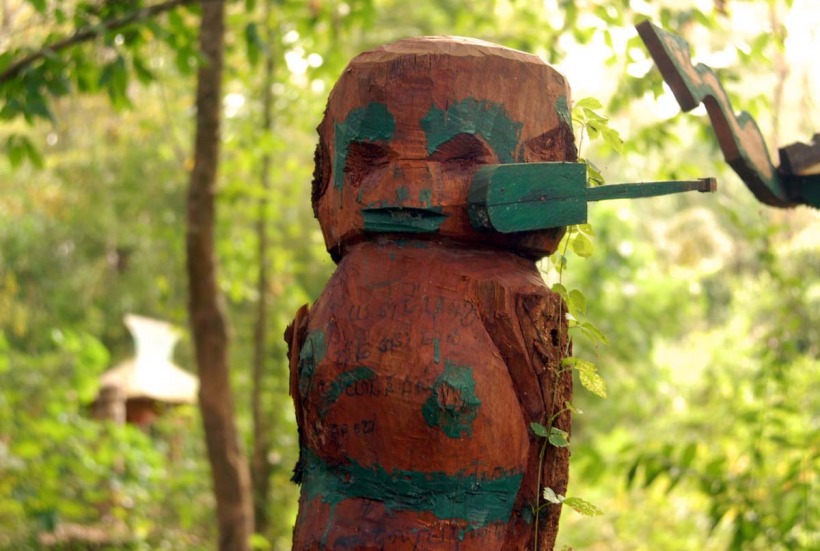
Wow, said Zeynep, that’s an amazing cultural celebration. Yes, said Rita, life and death are beautiful mysteries.
How did you meet each other in Banlung, Zeynep asked Lucky. I traveled the narrow road from Pakse, Laos south to Stung Treng then east to the remote Northeast. Here’s what happened.
A rusty red and white metal border bar weighted by rocks in a wire bucket hung suspended. The VIP double-decker candy cane bus was packed with babbling European flash packers destined for the 9th century at Angkor Wat. They had a long way to go to get back in time. They were doing SEA.
The more they see the less they know, said a shaman.
The busboy handed out departure and arrival forms, collected passports, a $2 Lao departure fee, a $25 Cambodia visa fee and $2 entry fee. He took everything to a Lao shack. The border bar went up. The bus rolled through no-man’s land at the speed of a snail and stopped.
Being landless is fun, dramatic and exciting. No country, no documents, no money, no food, no water, no medicine, no family, no friends, no chance. Abandoned on Earth.
A female Cambodian health care worker wearing a facemask got on the bus. Pointing a small medical toy gun into faces she registered body temperature.
Someone said, “If you’re sick you stay here.”
“On the bus?”
“No, between countries. On the road.”
Sounds like a novel.
Crossing a border is a transcendental act.
On the C side it’s business as usual. Immigration shacks, money changers, women hustling fried food, beverages and fruits, naked children, scavenging emaciated dogs, ripped cell phone umbrellas and haggard tourists drinking H2O in blazing heat waiting for the boy to return with passports. An incomplete grandiose empty glass and brass Cambodian immigration building with fake Angkor temple motifs and plastic elephants, surrounded by landmines signifies exotic investment.
Money = tourism = money.
Stung Treng in Ratanakiri province was eight-seven clicks south along the Mekong. Swim with dolphins. Tourists passed through this small faded colonial town. They had a schedule. Time chases them, Hurry up! Hurry Up! You’re going to be late for an important date with destiny. Get a move on.
I visited Mekong Blue, the Stung Treng Women’s Development Center. Fifty women do a six-month silk weaving course. They feed larva, harvest cocoons, dye and create silk textiles. It is a UNESCO award winner known for superior quality, creativity and originality.
They have Mulberry trees for leaves. Worms eat the leaves. Their saliva makes yellow cocoons. Saliva becomes a protein and is stronger than steel. Silkworm cocoons are boiled to extract raw yellow silk. One thread is 300 meters long. It is separated into soft and fine threads.
They dye the threads using natural materials: banana (yellow), bougainvillea (yellow), almond leaves (black), lac insect nests (red and purple), prohut wood (yellow and green), lychee wood (black and gray), indigo (blue), and coconut (brown and pink).
They also weave Ikat, a technique creating patterns on silk threads prior to dyeing and weaving. It is called HOL. There are 200 motifs.
The center improves their quality of life. It breaks the cycle of poverty through vocational training and educational programs. They have a primary school with thirty-five kids and two teachers. Everyone receives lunch. It is the single biggest employer in town after the government.
Then I traveled east on dusty roads to Banlung.
A cool educational adventure, said Z weaving through life.
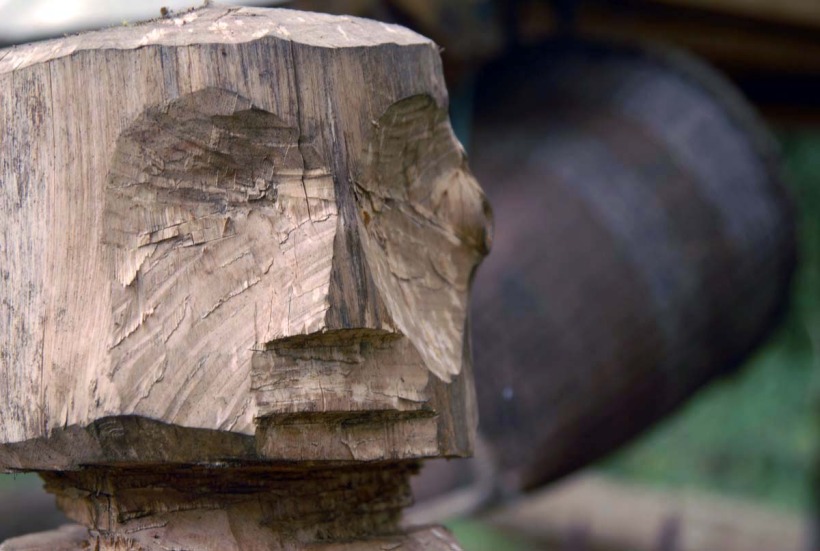






Reader Comments